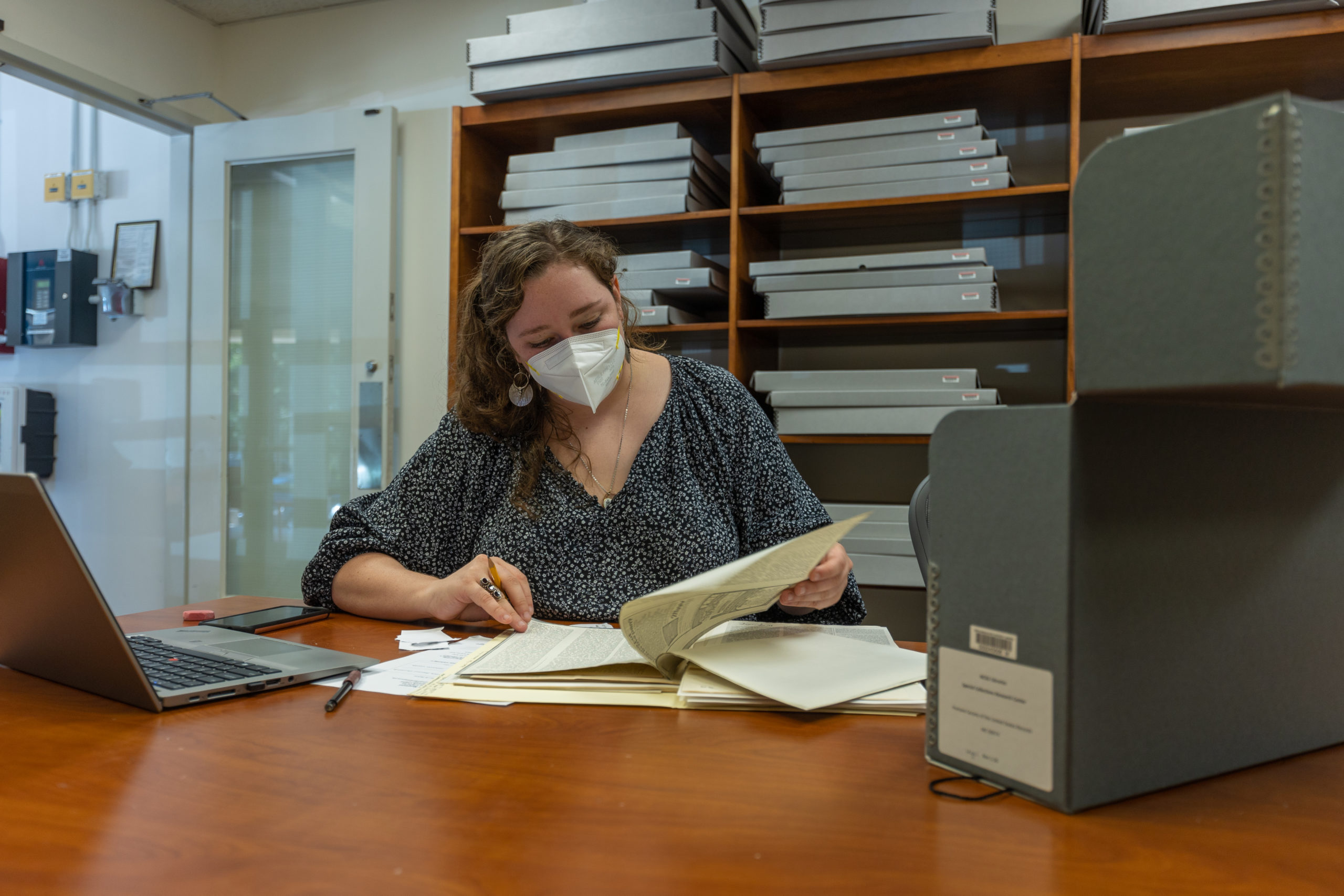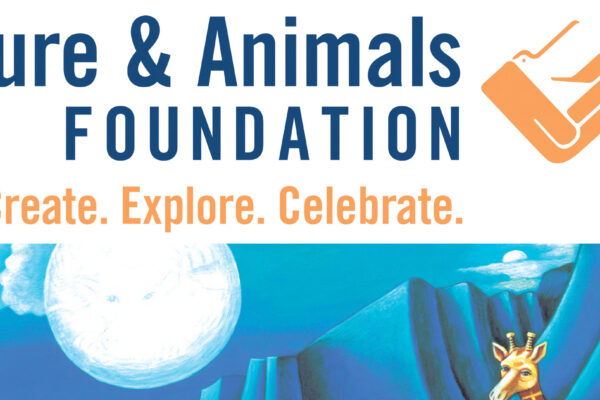Organizing My Ignorance
In the print version of her first Reith Lecture, the late Hilary Mantel wrote “history is not the past—it is the method we have evolved of organising our ignorance of the past.”[1] This line has been running through my mind as I’ve sat in coffee shops and libraries the last few weeks, trying to distill my experience of working in NCSU’s archives this August. Partly so I can write this report you are now reading, partly so I can understand for myself what precisely happened to my research project during the month I sat surrounded by so many archival boxes.
The research project began with what seemed to me a collective scholarly ignorance, an unanswered question in the literature. Histories of animal welfare in the United States commonly trace contemporary shelter and animal control institutions back to nineteenth-century New York.[2] The story goes that increasing urbanization meant unprecedented numbers of people and animals were herded together in the city. While people depended on many kinds of animals for transportation, street cleaning, crop fertilization, milk, meat, pest control, and even companionship, sometimes the same animals that were so useful to people could themselves be seen as pests, as threats, to urban order. Dogs were one such species. People feared that the dogs they saw roaming the streets could be rabid. Just one bite could doom them to an agonizing death by hydrophobia, as the human manifestation of rabidity was then known.
And so, seasonal extermination campaigns were planned. Carried out with greatest fervor during the “dog days of summer,” when it was thought that the heat increased the number of rabid dogs, the city initially offered public bounties for bodies. Working class men and children would club or drown their catches in the street and bring them into city hall for payment. But as upper class urbanites formed a new movement for animal welfare, under the aegis of Henry Bergh’s American Society for the Prevention of Cruelty to Animals (ASPCA), objections arose. They argued that these gruesome executions might incite bloodlust in those who witnessed them. If such violence to dogs was permitted, would not people begin to think they might treat their fellow humans with cruelty, too? The ASPCA urged the city to cease or at least decrease its bounty payments; to employ professional, uniformed dogcatchers; to establish a waiting period before killing the dogs, in case some had been inadvertently separated from their owners and might be reclaimed; to give food and proper shelter to the dogs so impounded; and to move the executions indoors. After much bureaucratic wrangling, the ASPCA won this and more: they would take over the city’s dog catching and culling program, ensuring what they called “humane” or “merciful” “destruction” of the dogs. Other humane societies arose throughout the country in short succession, following the ASPCA in its impounding and culling activities for the prevention not only of cruelty but also of rabies.
The unanswered question I had was this: If by the early twentieth century, Louis Pasteur’s rabies inoculation had reached the United States and hydrophobia was no longer a major public health concern, why were the cullings still taking place?[3] Why were humane societies still carrying them out? Based on the statistics published in the societies’ annual reports, they were killing more and more animals with each passing year. Somehow, the pounds, shelters, and cullings remained, even though hydrophobia paranoia had more or less gone. Indeed, they remain to this day, with the killing called euthanasia. And I meant to find out why.
By the time I applied for the Tom Regan Research Fellowship at NCSU, I felt I had started to transform this ignorance into knowledge. The twentieth-century records of several humane societies showed that they did not kill dogs to protect human health; instead, they killed dogs for the sake of the dogs themselves. These animal advocates believed that dogs needed human homes (ideally, middle- or upper-class white homes) in order to have a good life, and that suitable homes were in short supply. They held that a quick, relatively painless death was the next best thing to a good life, far preferable to a life on the streets or with an unfit family. Their work was, in their own understanding, a form of mercy killing.
The clear resonances with eugenics, including the raced and classed ways they evaluated the fitness of human animal keepers, was at the heart of the history I would write about euthanasia. My dissertation would chart the development of euthanasia as mercy killing; examine the technological innovations societies pursued in an effort to perfect euthanasia; address the turn toward the veterinary profession for the adjudication of controversies over euthanasia methods; and conclude with the 1970s–2000s “no kill” shelter and sanctuary movements.
It was this last chapter for which I hoped to find material in NCSU’s archives. Their collection included an impressive number of newsletters from the sanctuaries that had popped up across the country in the late twentieth century. I was sure I would spend the month filling in the gaps in my story, which was to end in this marvelous moment of pushback against the eugenicist logics of euthanasia.
That’s not what happened. The newsletters were there, of course, as the collection guide had promised, and I diligently photographed hundreds of pages for future reading. What I skimmed through supported the general framing I had brought to the subject: sanctuaries were self-consciously positioning themselves in opposition to euthanasia and typical municipal pounds. Yet I felt myself drawn to the boxes that had nothing to do with this chapter, boxes I had called out of sheer curiosity. Boxes I had called because the amazing archivists who work with these collections had explained that the materials inside of them, from the Humane Society of the United States, had only just been cataloged. I and the other Regan Fellow visiting that summer would be the first two researchers ever to have the chance to look at them.
What I found inside showed me just how much I still had to learn about animal welfare and euthanasia’s history in this country. It turns out that the two largest national animal protection organizations, the Humane Society of the United States (HSUS) and the American Humane Association (AHA), had both sponsored experiments to develop canine birth control. They knew euthanasia was a problem, but so, too, they believed, was animal overpopulation. They investigated and helped invent multiple forms of birth control in an attempt to intervene in the population issue with a means other than death. I knew that many humane societies had advocated for spaying and neutering pets, but I hadn’t realized that such advocacy had begun in the 1950s. I hadn’t realized that intrauterine devices and oral contraceptives had also been major projects. I hadn’t realized that animal advocates had funded live animal experiments for that purpose. I hadn’t realized that the mid-twentieth-century discourse around human “overpopulation” had its mirror in animal overpopulation discourse. Sitting with these boxes and their traces of the past, I started to see that the rise of opposition to animal euthanasia within the animal welfare movement couldn’t be understood except alongside the rise of surgical and chemical reproductive control initiatives. The framing of the issue as one of “animal overpopulation” never quite went away; the method of its management was simply shifting.
There are many gaps in the records and in my history. I have rather a lot of ignorance to organize, in Mantel’s terms. Some of this ignorance may be resolved as I find new sources. But for every source I find, I’m now reminded there is more to this history. There are crucial connections, actors, and turning points that I don’t even know I don’t know about. For the thousands of pages I turned and the weeks I spent gathering information, I feel humbled by how small my piece of the past is.
My deep thanks to the archivists of the NC State University Libraries Special Collections Research Center who supported my project so generously, especially Cathy, Gwynn, and Taylor. My deep thanks also to the Culture & Animals Foundation for their sponsorship of the Tom Regan Visiting Research Fellowship, which made a month in the archives possible for me.
[1] Hilary Mantel, “Why I Became a Historical Novelist,” The Guardian, June 3, 2017.
[2] Robichaud, Wang, and Pearson offer rich analyses of this early history of SPCAs. See: Andrew Robichaud, Animal City: The Domestication of America (Cambridge, Harvard University Press, 2019); Jessica Wang, Mad Dogs and Other New Yorkers: Rabies, Medicine, and Society in an American Metropolis, 1840–1920 (Baltimore: John Hopkins University Press, 2019); and Susan J. Pearson, The Rights of the Defenseless: Protecting Animals and Children in Gilded Age America (Chicago: Chicago University Press, 2011).
[3] Pasteur had in fact developed and publicized his inoculation for rabies much earlier; he inoculated his first human test subject in 1885. But Pasteur’s inoculation was the material offspring of a germ theory of rabies that contradicted the commonplace American understanding of the sickness as spontaneously generated; in the former, an infectious microorganism causes the disease in the dog and in the latter, rabidity emerges from within the body of the dog itself, perhaps as a result of exposure to too much heat, or wearing a muzzle, or too little or too much sexual activity, and so on. Even as news of the inoculation excited the press and as branches of the Pasteur Institute opened stateside, it would be some years before Pasteur’s understanding of rabies became part of mainstream American medical thought and public culture. Wang’s Mad Dogs and Other New Yorkers is crucial reading on the subject of conflicting theories of rabies and their significance for public health management.
Photo of Kat Poje: Brent Brafford





